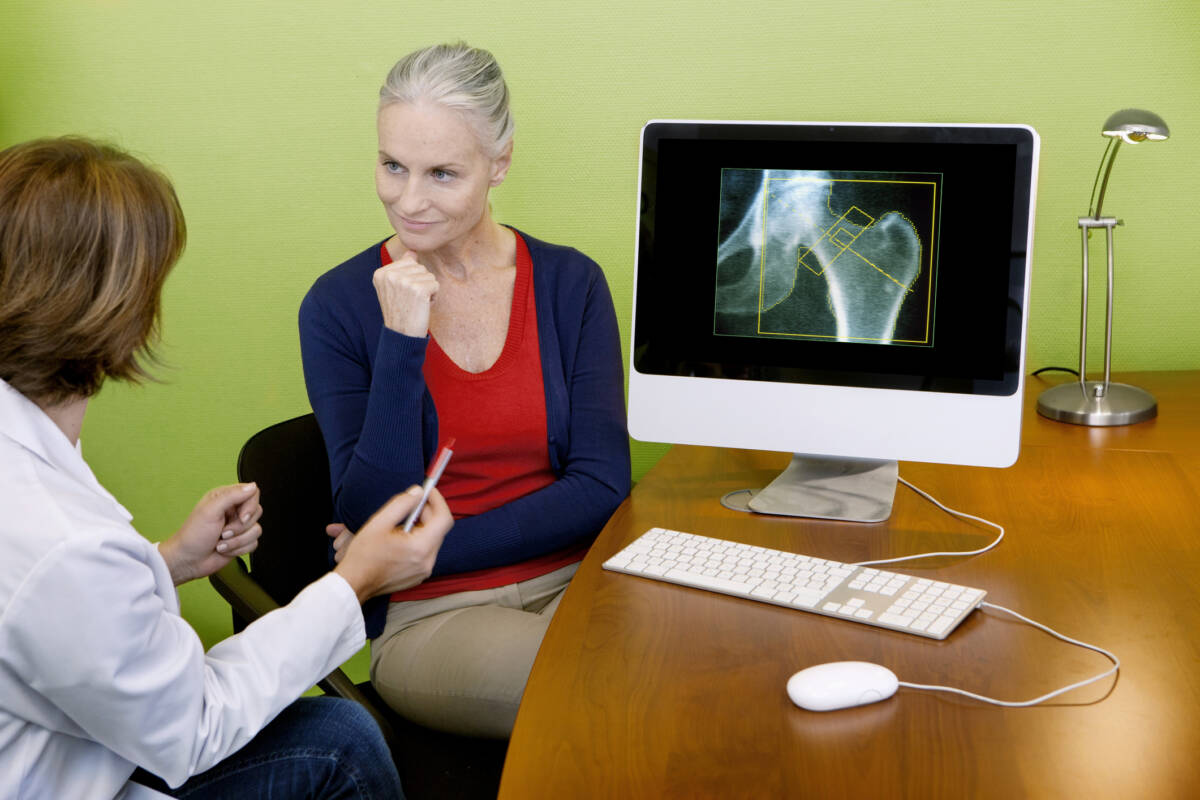Prioritising your bone health: Why now’s the time to act

While osteoporosis is more common in older Australians, there can be a common misconception that it’s a disease for the elderly.
There are numerous lifestyle factors that can impact someone’s risk of developing osteoporosis later in life, factors that many Australians might not have thought about before.
This is why there’s a growing need for all of us to maintain bone health through all stages of life.
Bone health and why it’s important
Osteoporosis is defined as a condition which causes the bones to become less dense, and more brittle, increasing the chance of a fracture.
Research has shown the common places for a broken bone include hip, wrist, spine, as well as ankle, leg, arm, and ribs (1).
Having a fracture due to underlying osteoporosis can be debilitating and have serious impacts.
GP and immediate past president of the Australian Medical Association, Dr Tony Bartone, says that’s why it has been a priority in recent years to talk about bone health.
“It’s been a focus for primary health care in general practice for a significantly long period of time now,” he told 2GB.
“Getting that awareness out in the community is perhaps what we need to focus on more, but certainly if you’ve got a regular GP, they would have already started to look at [the risks] regardless of what period of your life you are in.
“It is not purely an older person’s disease, we need to look at risk factors [throughout] various stages of your life and certainly we also need to try and prevent it happening with appropriate bone health. As far back as even adolescence you start to lay down a lot of bone strength going forward because of the type of exercise you do or don’t do and the eating behaviours through your pregnancy, breastfeeding and beyond as a woman.”
“You obviously also have the ability to put down and lay down more strength and more calcium into your bones.”
Who is at risk and why?
Dr Bartone explains there’s numerous risk factors. Women in their post-menopausal years (especially if there is an early onset) have a significantly increased incidence of osteoporosis.
But he says there’s also other factors, such as family history, smoking, excessive alcohol use, dietary calcium intake as well as physical activity and exercise levels.
“There’s medical conditions also that you have to be aware of, kidney disease, early menopause … but also a number of conditions, gastrointestinal conditions where you might not be absorbing certain nutrients that well,” he said.
“The increasing prevalence of steroids as part of treatment for various conditions; steroid therapy is a significant risk factor too.”
These days, it’s hoped that the condition can be found before a fracture, but that’s not always the case.
“Some people might notice some pain, which could be an indication of a fracture,” Dr Bartone says.
“They might notice unexplained pain in their back, or what we call an occult or hidden fracture of the spine.
“Minimal trauma or fall or slip might provoke that pain and then you go and investigate that pain and find that there’s a crushed vertebrate.”
What is a bone density scan (DEXA?)
The DEXA scan measures bone density and strength (2) and is a quick, painless procedure to help diagnose the condition.
“It’s a diagnosis that you can suspect clinically but you usually confirm it with scans, and the scans look at the density of the bone on a risk matched population basis,” Dr Bartone explained.
“What I mean by that is, how ‘the normal’ changes with age.”
It’s a simple procedure and it is covered by Medicare for some Australians who are at risk. “A walk in the park procedure, you might say,” he adds.
Take action for your bone health: make an appointment with your doctor and request a bone density scan today.
Disease education message by Amgen Australia. Amgen Australia Pty Ltd, Sydney NSW 2000 ABN 31 051 057 428. Phone: 1800 803 638 www.amgen.com.au. AU-14947. Approved March 2021.
The advice given on this page is general. Please consult your doctor about what is best for you personally.
Dr Tony Bartone was not compensated for this article.
1. Healthy Bones Australia, https://healthybonesaustralia.org.au/your-bone-health/about-bones
2. Better Health Vic, https://www.betterhealth.vic.gov.au/health/conditionsandtreatments/bone-density-testing















